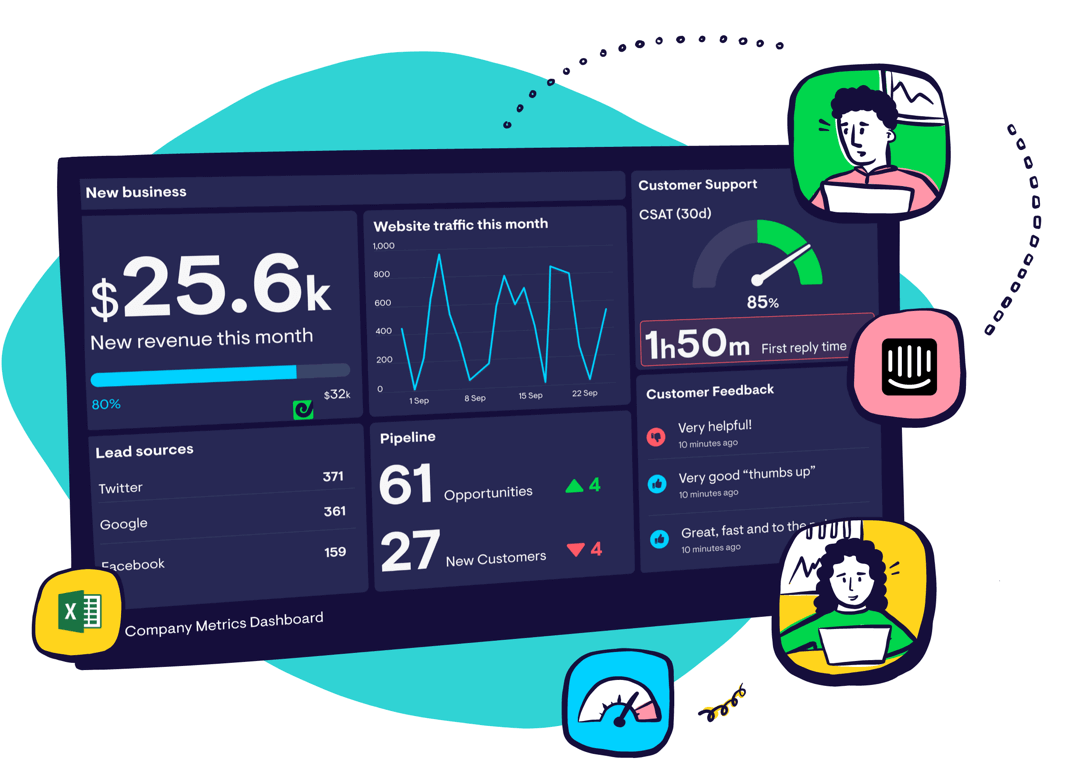Lead Velocity Rate
What is Lead Velocity Rate?
The Lead Velocity Rate is the growth percentage of qualified leads month over month. It measures your pipeline development. That is, how many (quality) potential customers you’re currently working on converting to actual customers.
Advice from VCs: Why Lead Velocity Rate is critical
“[Lead Velocity Rate] is real-time, not lagging, and it clearly predicts your future revenues and growth. And it’s more important strategically than your revenue growth this month or this quarter. Hit your LVR goal every month… and you’re golden. And you’ll see the future of your business 12-18 months out, clear as can be.” - Jason Lemkin, VC and Founder of SaaStr
“Looking at the current pipeline value as well as the historic pipeline development lets you peek into the future and estimate (and sometimes guesstimate) how growth could look in the next few months.” - Christoph Janz, Co-founder & Managing Partner, Point Nine Angel VC
How to calculate Lead Velocity Rate:
[ (#) Qualified leads current month - (#) Qualified leads last month ] / (#) Qualified leads last month X 100 = (%) Lead Velocity Rate
Lead Velocity Rate (LVR) can be calculated by first subtracting the number of qualified leads last month from the number of qualified leads this month. Then divide by the number of qualified leads last month and multiply by 100 to convert it to a percentage.
Pros:
Lead Velocity Rate (LVR) is a helpful leading indicator of sales revenue. While actual revenue may fluctuate, steadily increasing the number of qualified leads each month is a reliable predictor of future growth and revenue.
The primary advantage of tracking LVR is having a real-time indicator of growth (in contrast to MRR or other revenue metrics that are lagging indicators). If you see that you’re trailing in leads for the month, you can immediately take action to generate more qualified leads before the month is over.
Cons:
The obvious downside to LVR is that it’s not actual revenue. If there are hiccups in the sales process (i.e. leads aren’t actually getting closed), then this metric becomes unreliable. This can be avoided by tracking LVR along with other key metrics such as MQL to SQL Conversion Rate and SQL to Win Conversion Rate.
It’s critical to use qualified leads when calculating LVR, otherwise it can quickly become a vanity metric that doesn’t correlate to actual revenue growth.
Relevant SaaS Metrics and KPIs:
If you’re adding Lead Velocity Rate to your SaaS dashboard, you might want to also consider tracking these related SaaS metrics for context.
Industry Benchmarks
“Does the company have 6x+ the amount of pipeline to their bookings plan (target revenue)? If so, you can be confident they will achieve the next period’s plan.” - Tom Tunguz, Partner at Redpoint Ventures
Lead Velocity Rate will vary widely based on company, industry, and product/service. It’s best to start with your MRR Growth Rate target and then calculate the number of qualified leads you need in order to close that amount of revenue. Use MQL to SQL Conversion Rate and SQL to Win Conversion Rate to estimate how many leads will close.
Additional Notes
If you want to calculate a more specific velocity rate for each stage of your pipeline, check out this detailed post.
“This metric is less relevant for SaaS startups with very low ARPA (Average Revenue Per Account) and very short sales cycles but extremely relevant for SaaS companies selling bigger deals. For SaaS startups with a low ARPA, I look at the development of free trials instead.” - Christoph Janz, Co-founder & Managing Partner, Point Nine Angel VC
